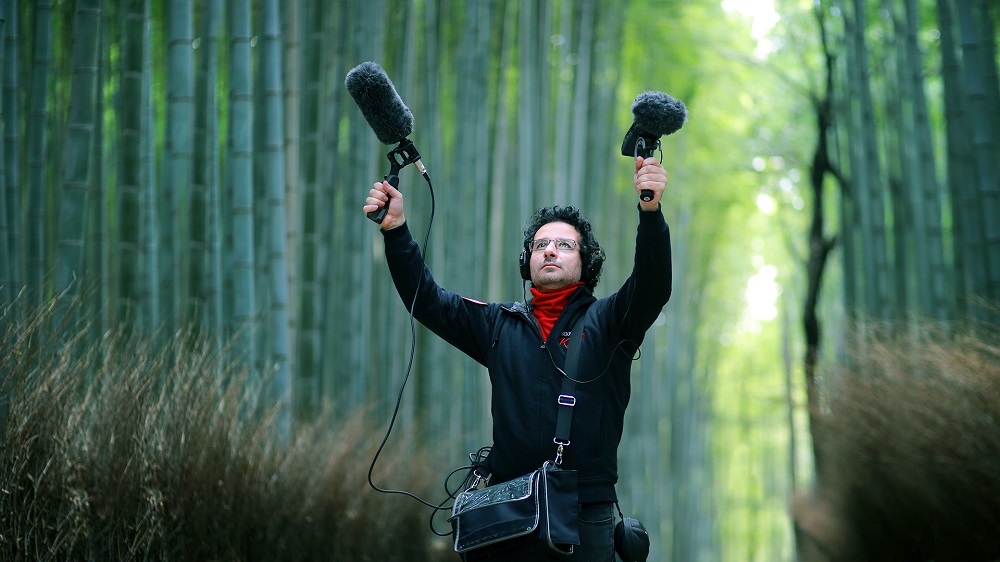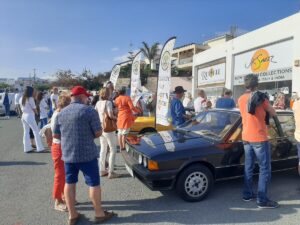By Bejay Browne.
The tak, tak of water into a bucket from a leaking roof and the whoosh of steam from a coffee machine in a busy cafe should hardly count as music to the ear.
But for Marios Joannou Elia, such sounds can become a symphony.
Meeting in a bustling coffee shop, the Paphos-born composer invites me to really listen to the cacophony of complex sounds around us: steam from the coffee machine, the general hubbub of the cafe, hum of chatter, the steady thump of background music on the radio, the occasional scrape of a chair being moved, a high pitched squeak as the glass door swings shut, and the rumble of passing traffic.
It suddenly becomes an all engulfing symphony of sound, the music track to this present moment and life experience, and this, he said, is the aim of his latest projects.
“The sound here is polyphonic, made up of all of the different layers. If you listen to the sound, it’s not just a noise,” he said. “I try to sort of analyse it and then use this in my projects, in fact we generally hear many noises at the same time, but don’t really listen.”
Elia has racked up more than forty international prizes for his unconventional creation of monumental musical events.
At present he is completing his ambitious project, ‘The sound of Kyoto’, a contemporary acoustic portrait of the Japanese city this year.
“The project’s goal and vision is to musicalise the entire city,” Elia said of the project which was selected by the Japanese city from 330 proposals. The composer, who was also the artistic director of Pafos2017, completed a similar project in 2017, the ‘Sound of Vladivostok’.
Next up for the 40-year-old international composer and sound musician will be writing the composition for a World Guinness Record for the largest matryomin ensemble with over 300 players in Kobe, Japan, for the 100th anniversary composition for the invention of the theremin, the unique instrument with antennas which is played without being touched.
(The matryomin is a ‘one antenna theremin’ which is inserted into a Matryoshika or Russian doll. Played in a mass, the process of creating the complex, powerful sounds by the instrument is similar to that of a choir.)
The work is being commissioned by the Russian and Japanese theremin schools.
Elia is a visionary, and is also working on a new large-scale work for trumpet solo, symphony orchestra and choir, a commission of the Kodaly Centre and Pannon Philharmonic in Pécs, Hungary.
He can often be found at various locations around the world, hanging off a precipice, or precariously positioned above a waterfall, equipped with his sound recording gear, and all to catch that one elusive sound.
For the last year Elia has spent much of his time in Kyoto doing just that, composing and gathering sounds that tell the story of the city in a unique way which he describes as a ‘mosaic of all different pieces that fit together’. Most of this process is being documented in a film which will be the culmination of the work which is due to be completed in around a year’s time.
Musicians, soloists, ensembles, choirs and orchestras, sounds that are unique to the city and other acoustic components, such as: sounds and representations of the river, Sumo, Geisha, and the Matryomin orchestra are all important aspects, he said.
His ‘exceptional academic performance’ was awarded by the Austrian Federal Ministry of Education, Science and Research in 2002, one of many accolades he has already collected through his career.
Recently he was also honoured by the government of Primorsky Krai in Russia and the mayor of Vladivostok “for the development of the musical art in the Primorsky territory and the invaluable contribution to its cultural development”.
These accolades relate to another of Elia’s large scale projects, the ‘Sound of Vladivostok’ which premiered at Cinema Vladivostok and saw 350 musicians take part.
“The entire city is the scenery and the stage on which the music is performed and the city’s voice is heard,” he said.
This result is accomplished by using a vast and eclectic array of sounds including, a symphony orchestra, several choirs, Korean drums, Soviet-era cannons, ships and air jets.
The project was awarded the Grand Prix ‘Silver Archer’ of the Far East and led to an invitation from the Japanese government in collaboration with the city of Kyoto and Kyoto Art Centre to work on ‘Sound of Kyoto’.






